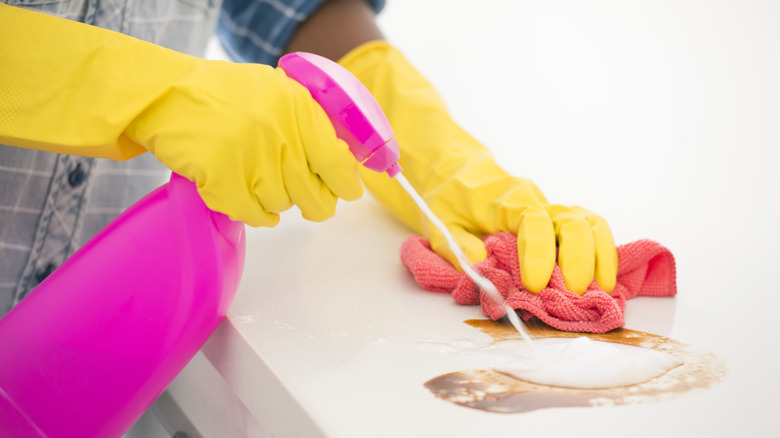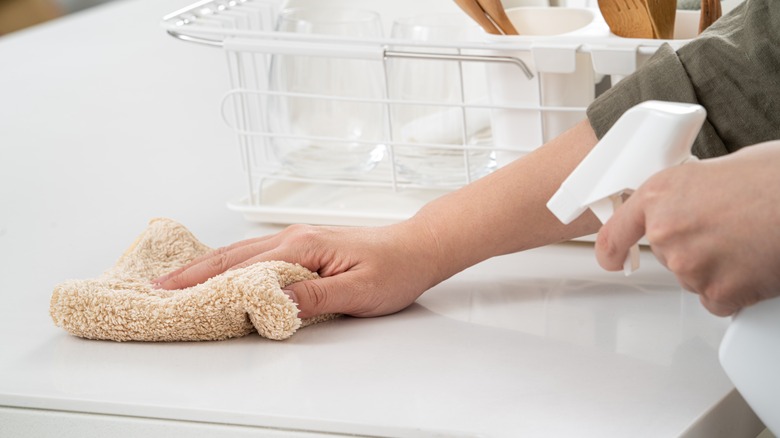Remove Food Stains From Granite Countertops With A Common Kitchen Product
Countless households embraced the granite countertop trend of the late '90s and early 2000s. But though the product has covered kitchens from literally coast to coast for decades, many homeowners still don't understand the proper way to clean granite. For instance, while vinegar is a great tool for general cleaning in the kitchen, it's a pantry staple you should avoid using to clean granite because of its acidic nature. Another common kitchen product, however, is a great option for the stone: dish soap.
A mixture of any mild dish soap (a few drops will do) with warm water is the only detergent you need to keep your granite counters properly clean. A soft cloth, like a microfiber cloth, should be used in wiping them down to avoid scratching the countertop's surface. Simply wet the cloth with the soapy mixture, scrub gently, and then rinse away the suds with water. Water can actually stain granite, too, so the surface should further be buffed with a soft, dry cloth once you're done washing it.
Keep in mind that it's best to promptly clean spilled foods and liquids from granite and not to let them linger before taking care of the spill. Because granite is a porous stone, it's susceptible to deep staining. That susceptibility increases if a granite countertop isn't properly maintained, which involves regular treatment with a protective sealant. In particular, anything acidic should be cleaned up right away. You should never store acidic foods on countertops, and you definitely shouldn't let spills involving acidic substances, such as citrus juices, coffee, vinegar, or alcohol, to remain on your counter for any length of time.
Tackling tougher granite countertop stains
If you have a granite countertop, it's important to immediately wipe up spills to prevent staining. But what if your granite counter is already stained?
If your countertop has a tough spot that has been present for awhile and won't come out with the dish soap method, another kitchen product, baking soda, can come to the rescue. Try making a paste from soda and water, applying it to the stain, and leaving it for several hours or overnight. Use plain water to rinse it away, again drying and buffing with a soft cloth afterward.
A similar approach to this involves combining hydrogen peroxide with the baking soda. It should similarly be spread over the top of the stain, but in this case, you must additionally apply a layer of plastic clingwrap over the paste, fixing it securely to the counter so it's airtight. Let the mixture sit for a longer period of time (a full day is a good rule of thumb). As with the water and baking soda combination, rinse the mixture away with water once enough time has elapsed, and dry and buff the area.


